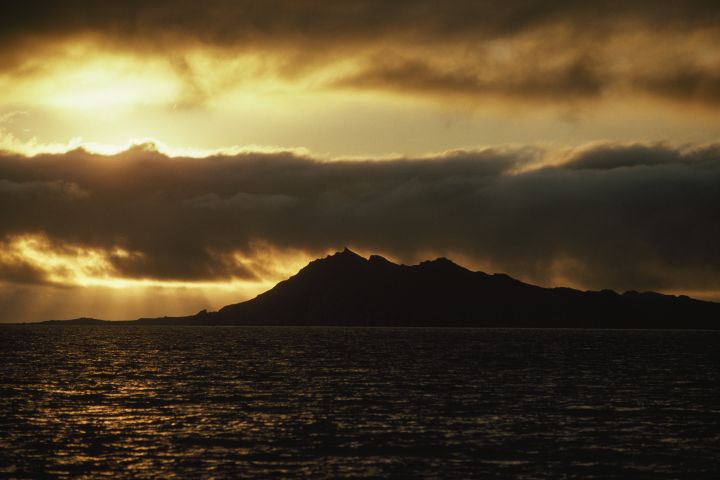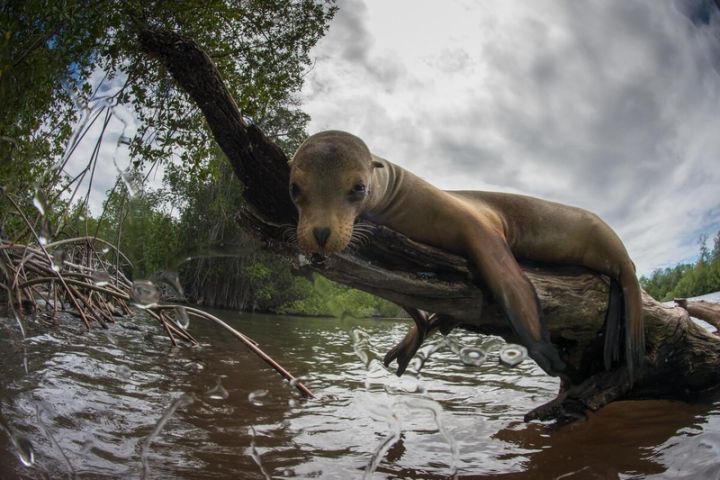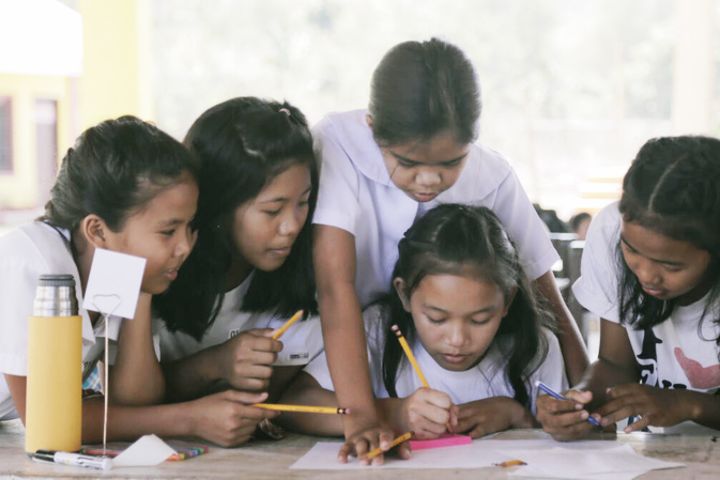IDEA SET
IDEA SET
Marine Critical Issues: Case Studies
Marine Critical Issues: Case Studies
Students use case studies to examine human impacts on marine ecosystems. They evaluate case studies in terms of an area's history, geography, habitats, species, stakeholders, human uses and impacts, and management goals.
Grades
9 - 12+
Subjects
Oceanography, Earth Science, Biology, Ecology, Geography, Human Geography, Physical Geography
This resource is also available in Spanish.
Humans are having a negative impact on marine ecosystems due to pollution, overfishing, habitat destruction, and other unsustainable practices. Analyzing case studies of human impacts on marine ecosystems helps students to understand the critical issues facing the world's oceans today, as well as the positive effects that the establishment of marine protected areas can have on the health of the ocean.
Informal Assessment
Assess students based on their responses to the discussion questions and the completeness and accuracy of their worksheets.
Extending the Learning
Using their worksheet Marine Ecosystem Critical Issues: Case Studies as a guide, have students research, create, and present a case study for a local aquatic or terrestrial protected area.
Prior Knowledge
- Marine ecosystems, interrelationships, and human impacts

Directions
1. Activate students’ prior knowledge and build background.
Remind students that Marine Protected Areas (MPAs) are areas of the marine environment that are protected by laws in order to preserve their natural and cultural resources. In order to establish and manage MPAs, case studies are created. Ask: What are case studies? Elicit from students that case studies outline important information about an area’s history, geography, habitats, species, human uses, and management goals. Case studies also describe threats to the area and explain why the area should be protected. The goals of such protection focus on restoring ecological balance to the area. Case studies help stakeholders understand how humans impact the area and what can be done to restore ecological balance and sustainably manage the area’s cultural and natural resources. Ask: Who are stakeholders? Remind students that stakeholders are people, organizations, or political entities interested in and/or affected by the outcome of management decisions.
2. Use Apo Island as an example case study of human impacts on a marine ecosystem.
Distribute the Marine Ecosystem Critical Issues: Case Studies worksheet and read aloud the directions. Review the categories of information in the chart, making sure that students know what components of the case study they need to record. Explain that for Case Study #1: Apo Island, they will view a video and work together as a class to complete the chart. For Case Study #2: Galápagos Marine Reserve, they will review a written case study and work in small groups to complete the chart. Show students the video, “EcoTipping Point Success Stories: Apo Island” (6 minutes, 30 seconds) and have them take notes on their worksheets as they watch. After the video, discuss the information students recorded. Ask:
- What happened as a result of Apo Islanders changing their fishing practices and establishing an MPA?
- What do you think would have happened if they did not establish the MPA or change the way they used their island’s ocean resources?
3. View the National Geographic video “Galápagos” to build background.
Tell students that they will watch a short video (4 minutes, 30 seconds) to learn about the Galápagos Islands and the establishment of the Galápagos Marine Reserve. As they watch, focus their attention by telling them to look for examples of the case study information they will record in their charts. Tell them to think about the human impacts that threatened the habitat and organisms of the Galápagos and eventually led to the establishment of the MPA.
4. Review the Galápagos Marine Reserve Case Study.
After viewing the video, divide students into small groups and distribute copies of the handout Galápagos Marine Reserve Case Study. Have students read through the case study and complete the charts on their worksheets. Have groups share the information they recorded for each of the case study components in their charts. Next, ask students to brainstorm the human impacts (threats) that led to the creation of the Galápagos Marine Reserve as a MPA. Ask: Why did the Galápagos MPA need to be protected? List student responses on the board. Then ask students to recall the human impacts that led to the creation of Apo Island’s MPA. Draw a circle around the impacts that are the same as those threatening the Galápagos. Underline impacts that are different from those threatening the Galápagos. Lead a discussion about the similarities and differences between the two case studies, including the human impacts that threaten the balance and sustainability of their marine ecosystems.
5. Have students reflect on what they have learned.
Ask:
- Based on the two case studies, what was done to address human-induced threats and restore balance in the marine ecosystems?
- Do you think more could or should be done to protect the habitat and organisms of the Galápagos and Apo Island? Why or why not?
- If the establishment of a MPA results in so many positive changes that benefit the people and the ocean, why are there not more MPAs throughout the world?

Objectives
Learning Objectives
Students will:
- identify and describe human impacts to marine ecosystems
- summarize case study information, including the history, geography, habitats, species, human uses, stakeholders, and management goals for different MPAs
- discuss human actions that can be taken to restore balance to threatened marine ecosystems and species
Teaching Approach
- Learning-for-use
Teaching Methods
- Discussions
- Research
Skills Summary
This activity targets the following skills:
- 21st Century Student Outcomes
- Information, Media, and Technology Skills
- Learning and Innovation Skills
- Critical Thinking Skills
- Analyzing
- Applying
- Understanding
- Geographic Skills
Connections to National Standards, Principles, and Practices
National Geography Standards
- Standard 14: How human actions modify the physical environment
- Standard 8: The characteristics and spatial distribution of ecosystems and biomes on Earth's surface
National Science Education Standards
- (9-12) Standard F-3: Natural resources
- (9-12) Standard F-4: Environmental quality
- (9-12) Standard F-5: Natural and human-induced hazards
Ocean Literacy Essential Principles and Fundamental Concepts
- Principle 6e: Humans affect the ocean in a variety of ways. Laws, regulations and resource management affect what is taken out and put into the ocean. Human development and activity leads to pollution (such as point source, non-point source, and noise pollution) and physical modifications (such as changes to beaches, shores and rivers). In addition, humans have removed most of the large vertebrates from the ocean.
- Principle 6g: Everyone is responsible for caring for the ocean. The ocean sustains life on Earth and humans must live in ways that sustain the ocean. Individual and collective actions are needed to effectively manage ocean resources for all.

Preparation
What You’ll Need
Materials You Provide
- Pencils
Required Technology
- Internet Access: Required
- Tech Setup: 1 computer per classroom, Projector, Speakers
- Plug-Ins: Flash
Physical Space
- Classroom
Grouping
- Large-group instruction
- Small-group instruction
Other Notes
Before starting the activity, download and queue up the videos.
Media Credits
The audio, illustrations, photos, and videos are credited beneath the media asset, except for promotional images, which generally link to another page that contains the media credit. The Rights Holder for media is the person or group credited.
Writers
Editors
Educator Reviewers
Expert Reviewers
other
Special thanks to the educators who participated in National Geographic's 2010-2011 National Teacher Leadership Academy (NTLA), for testing activities in their classrooms and informing the content for all of the Ocean: Marine Ecology, Human Impacts, and Conservation resources.
Last Updated
August 20, 2024
For information on user permissions, please read our Terms of Service. If you have questions about how to cite anything on our website in your project or classroom presentation, please contact your teacher. They will best know the preferred format. When you reach out to them, you will need the page title, URL, and the date you accessed the resource.
Media
If a media asset is downloadable, a download button appears in the corner of the media viewer. If no button appears, you cannot download or save the media.
Text
Text on this page is printable and can be used according to our Terms of Service.
Interactives
Any interactives on this page can only be played while you are visiting our website. You cannot download interactives.

